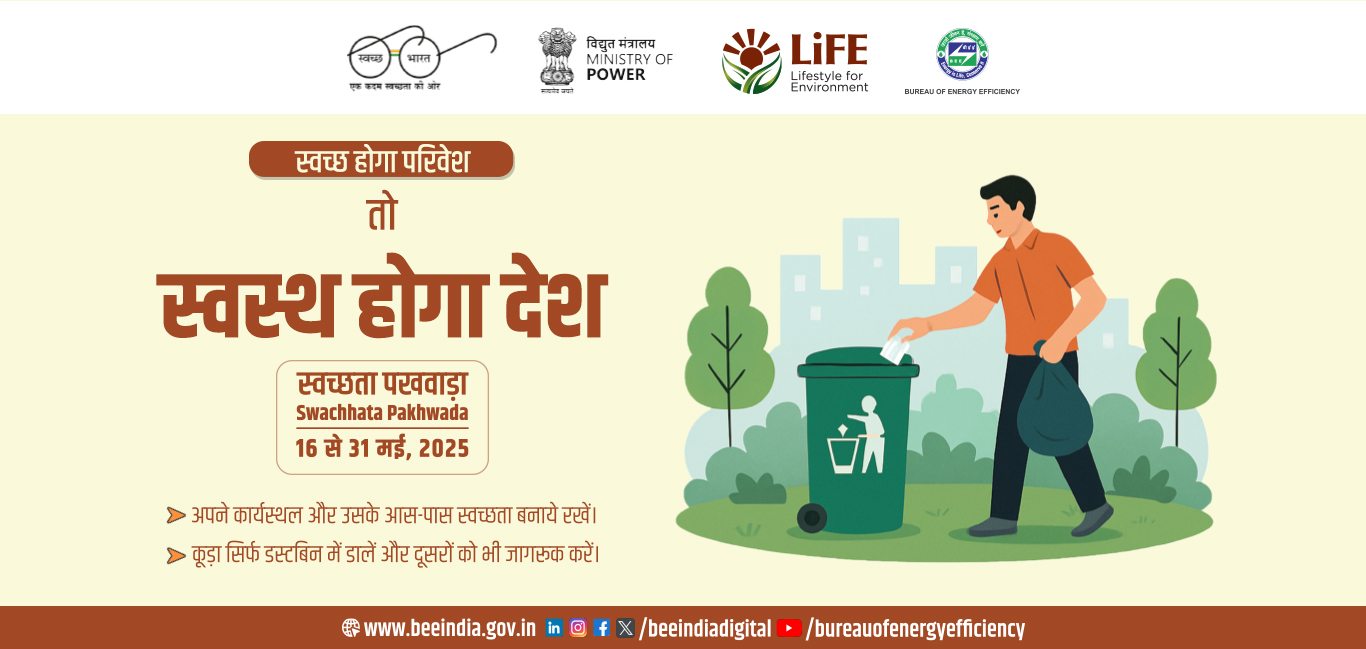Climate Change, an unwarranted consequence of carbon intensive activities since the industrial revolution is the biggest and the most unmatched challenge to the human civilization. As per the IPCC reports, human activities have already warmed the planet to about 1°C since the pre-industrial era. In India, climate change has emerged as the primary challenge for economic development. The changed weather patterns, unpredicted rainfalls etc. clearly showcase the impacts of climate change. Recognizing the need to combat the effects of climate change, Government of India had launched the National Action Plan on Climate Change (NAPCC) in the year 2008 having eight national missions. The National Mission for Enhanced Energy Efficiency (NMEEE) under NAPCC consists of programmes having climate change mitigation attributes. The Perform, Achieve & Trade (PAT) scheme under NMEEE has helped in avoiding about 30 million tonnes of CO2 and it is envisaged that by 2020, another 30 million tonnes of CO2 emission could be avoided.
Committed towards reducing its emissions, India has been participating in the Conference of Parties (COP) under the United Nations Framework Convention on Climate Change (UNFCCC) which aims to review the national communications and emission inventories submitted by the member countries. The twenty-first session of the COP that took place during November-December of 2015 in Paris reached a landmark agreement called the “Paris Agreement” to combat climate change and to accelerate and intensify the actions and investments needed for a sustainable low carbon future. The aim of the Paris Agreement is to strengthen the global response to the threat of climate change by keeping the global temperature rise well below 2 degrees Celsius above pre-industrial levels and to pursue efforts to limit the temperature increase even further to 1.5 degrees Celsius.
Subsequently, the Government of India submitted its Nationally Determined Contributions (NDCs) to UNFCCC on 2nd October, 2015, endorsing country’s commitment towards the issues related to climate change. India also played an active role during the climate change negotiations held in Paris at COP21 in December, 2015. India ratified the Paris agreement on Climate change on 2nd October, 2016, which required the member counties to make binding commitments to curb CO2 emissions to keep global average temperatures rise below 2C as compared to the pre-industrial years. A snapshot of India’s NDC submitted to UNFCCC is as follows:
- To put forward and further propagate a healthy and sustainable way of living based on traditions and values of conservation and moderation.
- To adopt a climate friendly and a cleaner path than the one followed hitherto by others at corresponding level of economic development.
- To reduce the emissions intensity of its GDP by 33 to 35 percent by 2030 from 2005 level.
- To achieve about 40 percent cumulative electric power installed capacity from non-fossil fuel based energy resources by 2030 with the help of transfer of technology and low cost international finance including from Green Climate Fund (GCF).
- To create an additional carbon sink of 2.5 to 3 billion tonnes of CO2 equivalent through additional forest and tree cover by 2030.
- To better adapt to climate change by enhancing investments in development programmes in sectors vulnerable to climate change, particularly agriculture, water resources, Himalayan region, coastal regions, health and disaster management.
- To mobilize domestic and new & additional funds from developed countries to implement the above mitigation and adaptation actions in view of the resource required and the resource gap.
- To build capacities, create domestic framework and international architecture for quick diffusion of cutting edge climate technology in India and for joint collaborative R & D for such future technologies.
In addition to the NMEEE programme, the Government of India has also take various measures for brining energy efficiency in various sectors of the economy such as Standards & Labeling for appliances, ECBC for buildings, sustainable transportation, Demand Side Management and energy efficiency in SMEs etc. It is worthy to note that as per India’s 2nd Biennial Update Report, 2018, emission intensity reduction of 21% between 2005 and 2014 has already achieved by the country. This scenario clearly showcases that the initiatives of the Government of India are in line with commitments made in the NDC.






